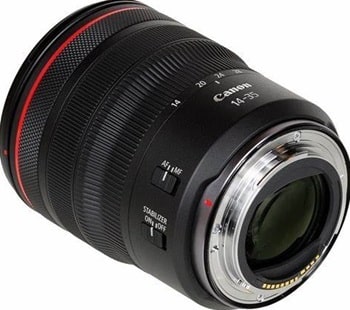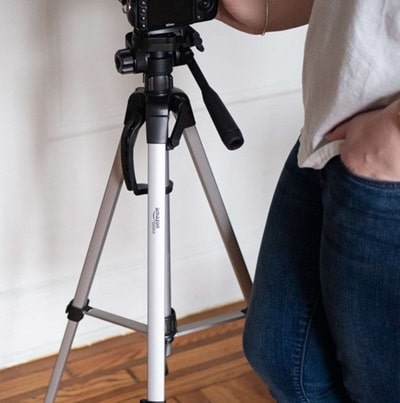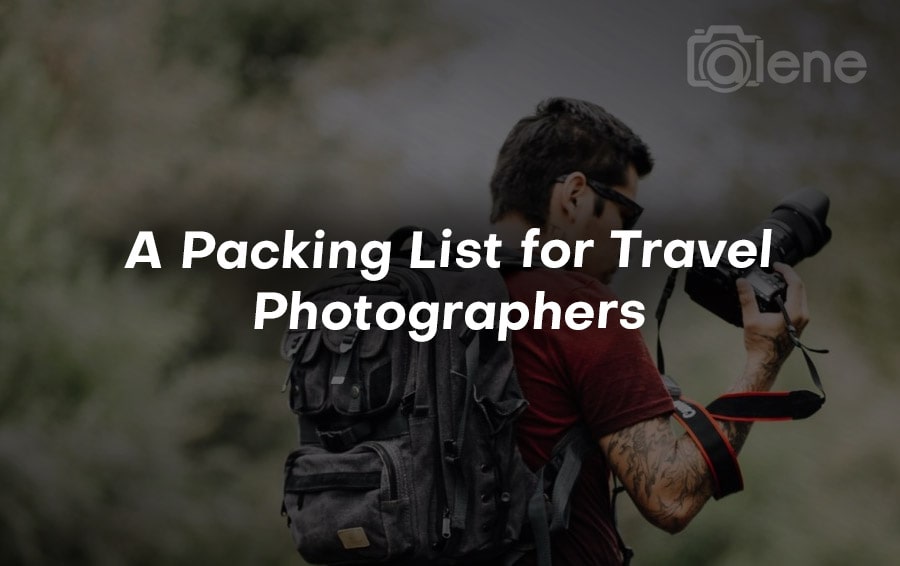You are in the correct place if you are getting ready for your next trip adventure and unsure about which camera equipment to bring. Having the correct camera and lenses will make a big impact whether your vacation is focused on catching breathtaking scenery, energetic cityscapes, or unguarded family moments.
To be honest, though, organizing the correct equipment without stuffing your backpack can be really difficult. I will guide you over various camera and lens choices in this article that mix portability with quality.
I have advice to assist you decide if you are a casual shooter content with smartphone images or a professional photographer needing the greatest image quality.
A Packing List for Travel Photographers
Cameras
OK, let’s discuss cameras. Your travel camera will be based on how much you value photography above merely savoring the occasion. Your smartphone could be sufficient if you enjoy taking casual pictures on a family holiday.
If you are reading this, however, you probably search for something with a little more oomph.
The days of hauling about a large DSLR and many weighty lenses when traveling are long gone. I promise you; I have been there and my shoulders still hurt.
Travel photographers looking to keep things light without sacrificing quality now mostly choose mirrorless cameras.
Mirrorless cameras—especially those with APS-C or Micro Four Thirds sensors—are far smaller and lighter than their DSLR equivalents. Though light-weight, they produce outstanding image quality, which makes them ideal for photographing anything from thorough street scenes to expansive landscapes.

These are an excellent option if you want a mix between performance and size. Like the Fuji X-T5, Fuji’s portfolio is especially sought-after since it provides excellent color reproduction and a broad spectrum of lenses, another excellent choices are the Canon EOS R7 and the Sony a6600.
For something even more small, cameras such as the Olympus OM-D E-M5 Mark III or the Panasonic Lumix G85 are superb. Micro Four Thirds For photographers who wish sharp, high-quality images but do not want to carry a lot of equipment, they are perfect.
If you’re a professional or just don’t want to sacrifice image quality, a full-frame mirrorless camera like the Sony a7 IV, Canon EOS R6, or Nikon Z6 II is the way to go. Their low-light capability, dynamic range, and amazing quality make them flexible for many kinds of photography.
Pro Tip: Think about carrying a portable charger and extra battery on a lengthy vacation. It’s better to be ready as mirrorless cameras sometimes have lesser battery life than DSLRs.
Lenses
Alright now that your camera is organized, let’s discuss lenses. Selecting the correct lens can be even more difficult than selecting a camera, particularly when every lens loads your bag more heavily.
This is a list of several kinds of lenses together with possible uses.
1. Ultra-Wide Lenses
If you enjoy seeing those broad, expansive views—think of stunning landscapes, tall skyscrapers, or narrow city streets—an ultra-wide lens is absolutely essential. Particularly helpful in busy or limited areas, these lenses let you squeeze a lot into your frame.

Excellent options are lenses including the Canon RF 14-35mm f/4, Sony 12-24mm f/4, and Nikon Z 14-30mm f/4. For travel, they are light and small, perfect.
If you have an APS-C camera, look at choices including Sony 10-20mm f/4 or Fuji 10-24mm f/4. While keeping your equipment light, they provide a fantastic wide-angle viewpoint.
Pro Tip: Do you have Milky Way shooting scheduled? Although you could be tempted to buy a fast lens like a 14mm f/1.8, if you employ methods like star stacking to lower noise, you can achieve amazing results even with an f/4 lens.
2. Normal Zoom Lenses
Your adaptable, all-rounder choice is a regular zoom lens. Its broad spectrum of focal lengths makes it ideal for street photography as well as portraits and landscapes. Should you are carrying only one lens, this should be it.
This lens is a popular since it offers enough reach for portraits and is wide enough to replace an ultra-wide. Another fantastic travel choice is Canon RF 24-105mm f/4. It is quite flexible covering wide to telephoto.
If you wish even more versatility, this lens provides more reach without compromising too much in terms of size and weight. Nikon Z 24-120mm f/4.
3. Telephoto Lenses
Making plans for some wildlife photography or headed toward a safari? You will want for a telephoto lens. These lenses let you disturb-free capture of far-off objects.
Lenses like as the 70-200mm f/4 or 70-300mm f/4.5-5.6 are excellent for general travel since they provide good reach without being unduly weighty. If you take serious pictures of animals, you might want a 100-400mm or even 500mm prime, but be ready for the added weight!
Travel Tip: Remember the weight and size restrictions of your airline. Plan differently since super-telephoto lenses occupy a lot of room in your carry-on.
Sample Travel Lens Kits for Different Camera Brands
Let’s wrap things up with some recommended travel lens kits for popular camera brands. These kits are designed to cover a range of shooting scenarios without overloading your bag.
- Nikon:
- Z 14-30mm f/4 (for wide landscapes)
- Z 24-120mm f/4 (versatile all-rounder)
- Z 50mm f/2 Macro (for close-ups and low light)
- Sony:
- 20-70mm f/4 (wide-to-tele flexibility)
- 70-200mm f/4 (for telephoto needs)
- 50mm f/1.8 (bright aperture for low-light and portraits)
- Canon:
- RF 14-35mm f/4 (ultra-wide versatility)
- RF 24-240mm f/4-6.3 (superzoom for all-in-one convenience)
- RF 35mm f/1.8 Macro (for street and macro photography)
- Fuji:
- 10-24mm f/4 (wide-angle for landscapes)
- 16-55mm f/2.8 (bright midrange zoom)
- 55-200mm f/3.5-4.8 (lightweight telephoto)
Camera Accessories
1. Tripod

Even though tripods can be a bit of a hassle to carry around, they are worth their weight in gold for travel photography. Whether you’re capturing a stunning sunset, shooting long exposures of city lights, or trying to get that perfect group photo, a tripod can help stabilize your shots and avoid any unwanted blur.
What to look for in a travel tripod..
- Go for a carbon fiber tripod if you can — it’s lightweight but still sturdy enough to hold your camera steady. A good travel tripod should be light enough to carry but stable enough to handle windy conditions.
- You don’t need anything too fancy or heavy. A small ball head will give you the flexibility to adjust your camera angles quickly without adding bulk.
Pro Tip: Some places, like historical sites or crowded tourist spots, may have restrictions on full-sized tripods. Always check the rules beforehand to avoid any headaches.
2. Tabletop Tripod or Tripod Alternative
If you’re traveling light or heading to locations where full-sized tripods aren’t allowed, a compact tripod alternative like a Gorillapod, Platypod, or tabletop tripod can save the day.
Why go small?
- Flexibility:
A Gorillapod can wrap around poles, tree branches, or anything stable, giving you unique angles and perspectives. - Compact and Portable:
These mini tripods are super easy to pack and can fit into any camera bag. They’re perfect for low-angle shots, time-lapses, or even as a makeshift selfie stick.
3. Filters
Filters might seem like an old-school accessory, but they can add a lot of creative flair to your photos. Here are the must-have filters for travel photography:
Essential filters to pack
- Circular Polarizers (CPL):

These are fantastic for reducing glare, deepening blue skies, and making colors pop. Perfect for landscapes and cityscapes. - Neutral Density (ND) Filters:
If you’re into long exposure shots, like capturing silky smooth waterfalls or motion blur in busy streets, ND filters are a game-changer. They reduce the amount of light entering your lens, allowing you to use slower shutter speeds even in daylight. - UV Filters:
These can protect your lens from scratches, dust, and the elements, especially if you’re traveling to harsh environments with sand, snow, or sea spray.
Pro Tip: Filters are small and lightweight, so there’s no excuse not to throw a couple into your bag. They can transform a good photo into a great one!
4. Multiple Memory Cards
Running out of memory space in the middle of a trip is a photographer’s nightmare. To avoid that, always carry extra memory cards. But here’s the thing — instead of carrying a single large-capacity card, consider using several smaller-capacity ones.
Why use multiple cards?
- Reduced Risk:
If one card fails or gets lost, you won’t lose all your photos. It’s like not putting all your eggs in one basket. - Backup:
Always carry backup cards, especially if you’re traveling to remote areas where it’s nearly impossible to buy new ones. And if you do find them, they’ll cost you a premium!
Pro Tip: Newer cameras use formats like CFExpress or XQD, which can be hard to find outside major cities. So stock up before your trip.
5. Extra Batteries
There’s nothing worse than being in the middle of a photo session only to have your camera die. That’s why extra batteries are a must for travel photographers.
Battery tips..
- Bring Spares:
Always carry at least two extra batteries, especially if you’re planning a long day of shooting or won’t have access to power outlets. - Portable Power:
Some cameras support charging via USB-C power banks. This can be a lifesaver if you’re on the go and don’t have time to sit by an outlet.
Pro Tip: Don’t forget to charge all your batteries the night before a big shoot. It’s easy to forget, but you’ll thank yourself later.
6. Chargers and Cables
This might seem obvious, but chargers and cables are often the most forgotten items when packing. A dead camera or laptop is useless, so make sure you’re fully equipped.
Packing smart for charging gear..
- Label Your Cords:
Use something like BongoTies or cable organizers to keep your cords tangle-free. You can also label them to avoid confusion. - Spare Chargers:
If you travel a lot, consider buying a spare set of chargers to keep in your travel bag. It’s one less thing to worry about packing each time.
7. Rain Protection
Weather can be unpredictable, and while most modern cameras are weather-sealed, it’s not worth the risk. Having some form of rain protection can save your gear from damage.
Quick rain protection solutions..
- Rain Covers:
Invest in a dedicated rain cover for your camera and lens. They’re lightweight and easy to carry. - DIY Solution:
If you’re on a tight budget, just throw a couple of trash bags in your bag. They’re great for emergency rain protection and can even be used to cover your entire camera bag.
8. Cleaning Materials
Travel can be tough on your gear. Dust, dirt, and smudges are inevitable, so it’s essential to carry some cleaning tools to keep your equipment in top shape.
Must-have cleaning gear..
- Lens Cleaning Cloth and Spray:
These are your first line of defense against smudges and dust. - Sensor Cleaning Tools:
If you’re comfortable with it, bring a sensor cleaning kit. A sensor swab or gel stick can help you avoid those annoying dust spots on your photos.
Computer Gear for Digital Nomads
If you plan on editing photos on the go or backing up your shots, here’s a quick list of computer gear you might want to consider:
- Laptop: Lightweight, portable, with enough power to handle photo editing.
- Card Reader: Essential for quickly transferring photos to your computer.
- External Hard Drive: For backups and extra storage. Consider SSDs for faster speeds and better durability.
- USB-C Hub: Useful if your laptop has limited ports.
- Charging Brick and Cables: Don’t forget these, especially if your laptop uses a different charger from your camera.
- Power Adapters: If you’re traveling internationally, make sure you have the right plug adapters.
Conclusion
And there you have it folks! Picking the right camera and lenses for travel can be a bit of a balancing act, but it all comes down to what you value most—whether it’s portability, versatility, or image quality. With the right setup, you’ll be ready to capture all those magical travel moments without feeling bogged down by heavy gear.

